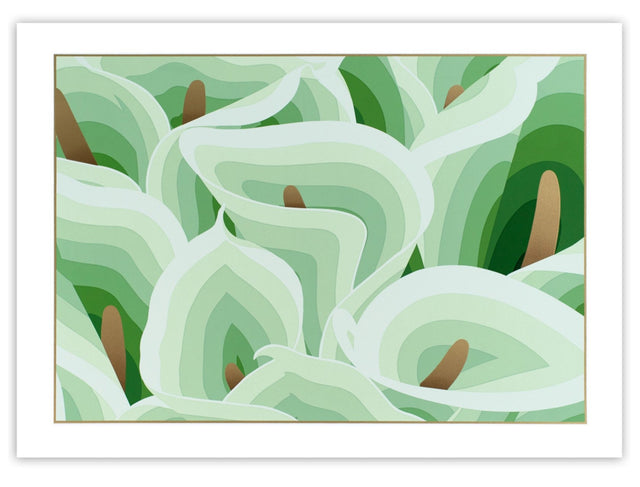
Green
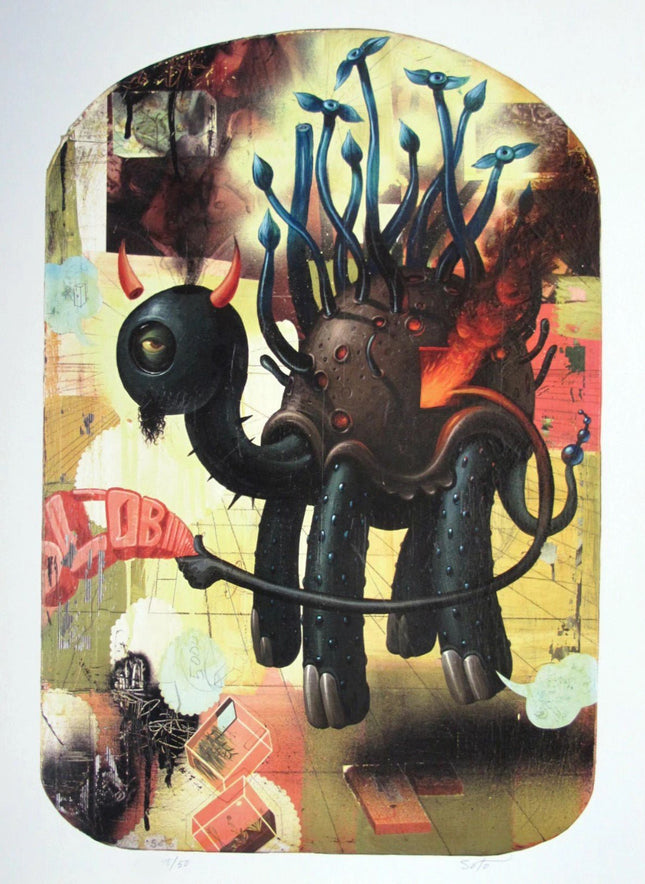
Jeff Soto Turtle God Lithograph Print by Jeff Soto
Turtle God Lithograph Print Limited Edition Artwork on Fine Art Paper by Jeff Soto, an urban graffiti pop street artist. Turtle God, 2007 Offset Lithograph Image Size: 16.5 x 22.5 inches (41.9 x 57.2 cm) Paper Size: 18 x 24 inches (45.7 x 61 cm) S/N edition of 500
$209.00
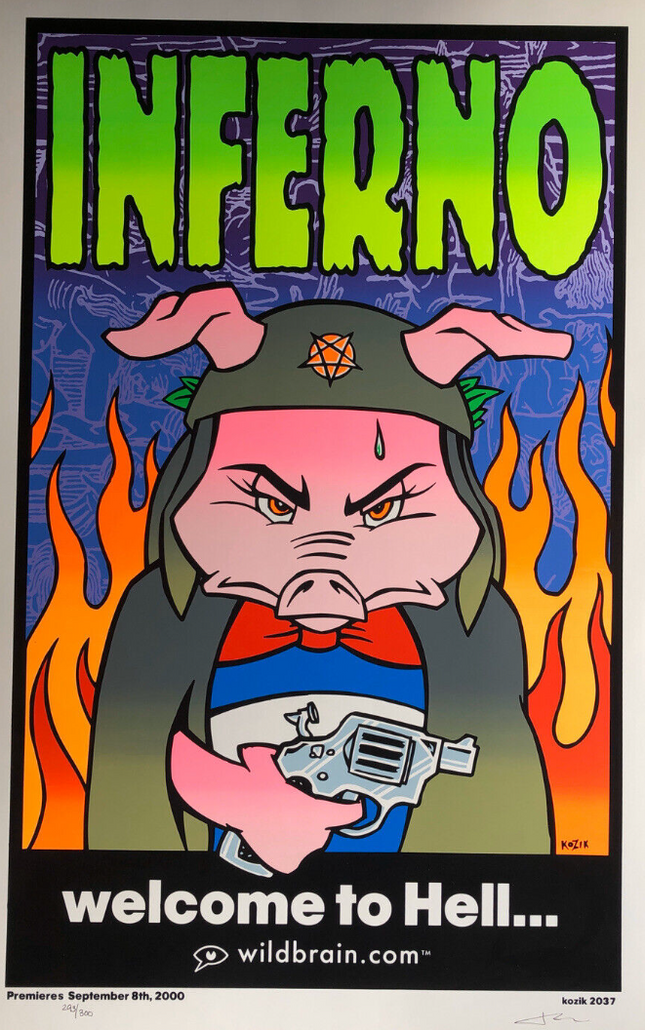
Frank Kozik Inferno Welcome to Hell 2000 Wild Brain Event Silkscreen Print by Frank Kozik
Inferno Welcome to Hell 2000 Wild Brain Event Silkscreen Print by Frank Kozik Hand-Pulled on Fine Art Paper Limited Edition Pop Street Art Artwork. 2000 Signed by Kozik & Numbered Limited Edition of 300 Artwork Size 22x36 Silkscreen Print Band Gig Poster by Frank Kozik WildBrain.com Event Promo September 8th 2000, Pig with gun in hell surrounded by fire. Frank Kozik is well known for his music posters and artwork in the pop culture and music industry, particularly in the punk rock scene. His work is characterized by its distinctive and bold style, often involving surreal or subversive themes. Silkscreen print is a printmaking technique that involves pushing ink through a mesh screen onto a substrate. It's known for allowing vibrant, bold colors and is often used for posters, fine art prints, and in the fashion industry. Wild Brain is a renowned animation studio.
$273.00
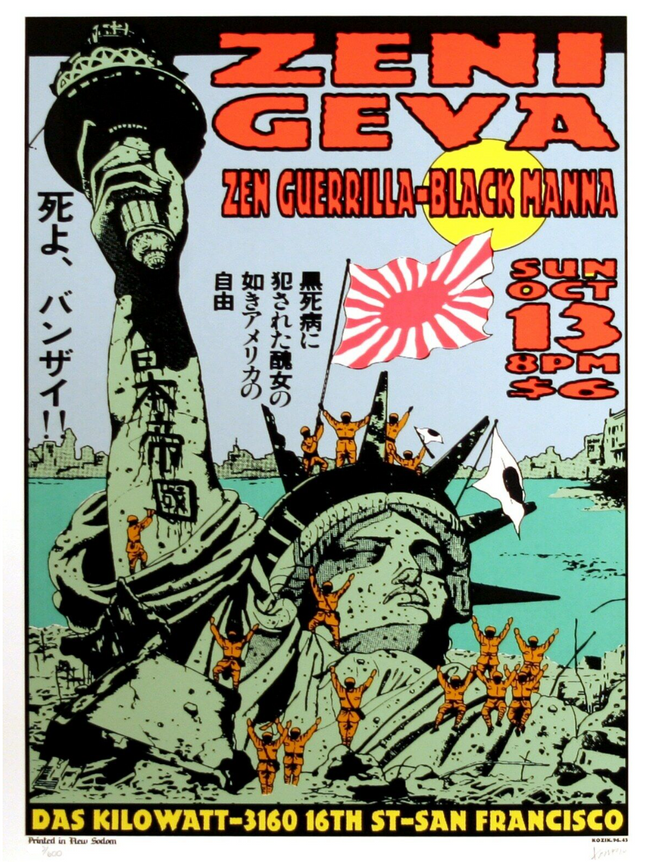
Frank Kozik Zeni Geva Zen Guerrilla Black Manna 1996 San Francisco California Silkscreen Print by Frank Kozik
Zeni Geva Zen Guerrilla Black Manna 1996 San Francisco California Silkscreen Print by Frank Kozik Hand-Pulled on Fine Art Paper Limited Edition Pop Street Art Artwork. 1996 Signed by Kozik & Numbered Limited Edition of 650 Artwork Size 17.5x22.5 Silkscreen Print Band Gig Poster by Frank Kozik. October 13, 1996 Das Kilowatt in San Francisco, California Capturing the raw energy and unbridled spirit of the 1990s San Francisco music scene, Frank Kozik’s silkscreen print for the Zeni Geva, Zen Guerrilla, and Black Manna gig on October 13, 1996, stands as a significant piece of pop and street art. Kozik, well-known for his contribution to the visual side of rock culture, has infused this piece with a compelling blend of political commentary and vivid imagery, hallmark traits of street art and his style. The limited edition print, measuring 17.5x22.5 inches, was meticulously hand-pulled on fine art paper, underscoring the artist's commitment to quality and the traditional methods of printmaking. With only 650 signed and numbered editions, this artwork is a treasure for collectors and enthusiasts. Its depiction of the Statue of Liberty, surrounded by figures wearing gas masks and holding flags, offers a subversive take on American iconography. The use of iconic symbols juxtaposed with elements that suggest upheaval reflects the era's punk and alternative rock ethos, resonating with themes of resistance and independence prevalent in the genres associated with the bands featured. The event, hosted at Das Kilowatt in San Francisco, California, is immortalized in Kozik’s signature style—where the text is as much a part of the art as the images. His choice of vibrant colors and bold lettering reflects the energy and intensity of the bands, making the poster a visual shout that echoes the music it advertises. This piece is more than promotional material; it's a snapshot of when street art began crossing into mainstream consciousness, blurring the lines between commercial art and political statements. Kozik’s work with this print serves not just to announce a concert but to stake a claim in the ongoing dialogue between art and society, where the streets become a canvas for messages that are as likely to provoke thought as they are to promote an event. In the world of street art, such pieces are vital—they challenge, they commemorate, and they often become a part of the history they depict.
$247.00
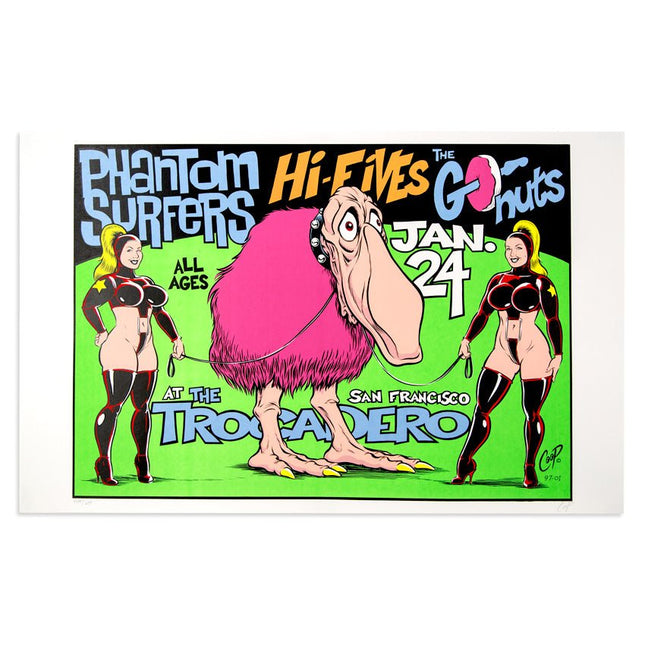
Coop Phantom Surfers Jan 24th 1997 The Trocadero Silkscreen Print by Coop
Phantom Surfers - Jan. 24th, 1997 at The Trocadero Limited Edition 8-Color Hand-Pulled Silkscreen Print on Fine Art Paper by Coop Graffiti Street Artist Modern Pop Art. Phantom Surfers Jan 24th 1997 The Trocadero Silkscreen Print by Coop Coop, real name Chris Cooper, is a hot rod artist working from Los Angeles. He was born in Tulsa, Oklahoma in 1968, and describes his occupation as "Insensitive Artiste". His work consists primarily of barely clothed Bettie Page-style 1950s soft pornography and/or B-movie monsters, with the female characters often taking the role of "Devil-Women". The image most often associated with his work is however slightly more tame: the face of a grinning devil with a smoking cigar clamped in its teeth.
$304.00
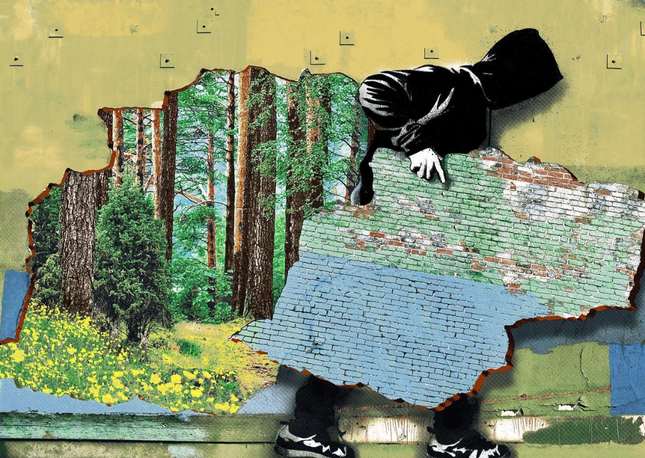
Hijack Reveal Your True Nature Archival Print by Hijack
Reveal Your True Nature Archival Print by Hijack Limited Edition Print on Fine Art Paper Pop Artist Modern Artwork. 2023 Signed & Numbered Limited Edition of 50 Artwork Size 30x22.5 Archival Pigment Fine Art Graffiti Art Hijack is an artist who has made a name for himself in the world of street art. As the son of the well-known street artist Mr. Brainwash, also known as Thierry Guetta, Graffiti Art Hijack has followed in his father's footsteps by creating thought-provoking and eye-catching works of art. Mr. Brainwash rose to fame after being featured in the documentary "Exit Through the Gift Shop," which was directed by the enigmatic British street artist Banksy. Mr. Brainwash has become a prominent figure in the street art world, known for his colorful, pop art-inspired pieces, and often incorporating elements from other famous artists such as Andy Warhol and Keith Haring. Hijack, influenced by his father's work and the vibrant street art scene, has developed his own distinct style. His art is characterized by a combination of graffiti, stencil, and collage techniques. He often addresses social and political issues, aiming to evoke an emotional response and promote discussion among viewers. As the son of Mr. Brainwash, Hijack is part of a new generation of street artists who continue to challenge the boundaries of traditional art forms and make a statement through their creative works. While he is influenced by his father's legacy, Hijack is also carving out his own path in the street art world, gaining recognition and respect from both art enthusiasts and fellow artists.
$1,182.00
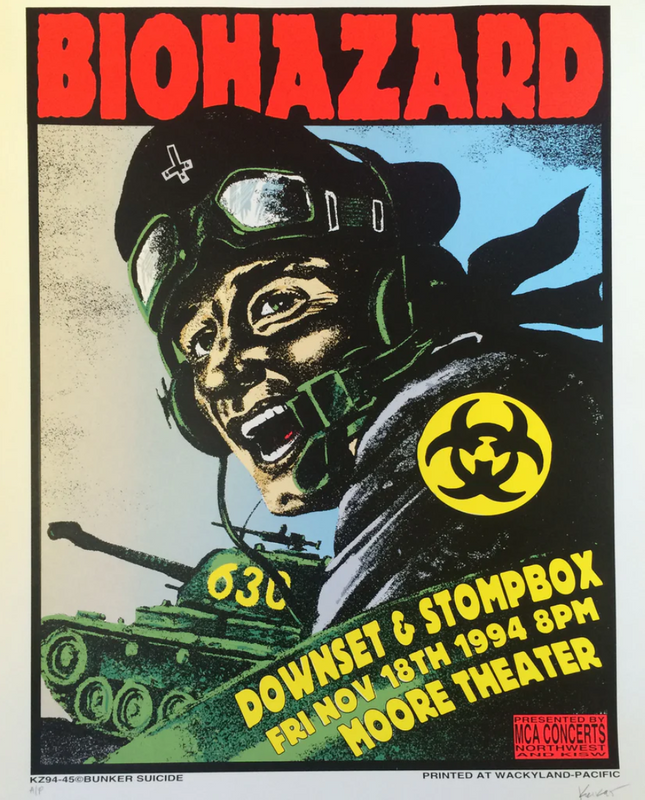
Frank Kozik Biohazard Downset Stompbox 1994 Seattle WA AP Silkscreen Print by Frank Kozik
Biohazard Downset Stompbox 1994 Seattle WA AP Silkscreen Print by Frank Kozik Hand-Pulled on Fine Art Paper Limited Edition Pop Street Art Artwork. AP Artist Proof 1994 Signed by Kozik & Limited Edition of AP Artwork Size 18x22.5 Silkscreen Print Band Gig Poster by Frank Kozik Nuke Tank Biohazard Military-Themed Gig Poster. Moore Theater November 18th 1994 Seattle Washington. Frank Kozik is an internationally recognized artist, best known for revitalizing the concert poster scene in the 1990s with his distinctive, edgy designs. Born in Madrid, Spain in 1962, Kozik emigrated to the United States at the age of 14, where his love for punk rock and counter-culture aesthetics began to shape his artistic vision. In the 1980s, he moved to San Francisco, CA, where he began creating concert posters for alternative bands, ultimately designing artwork for major acts such as Nirvana, Pearl Jam, and The Red Hot Chili Peppers. His work, characterized by saturated colors, cartoonish figures, and a subversive, often dark humor, became emblematic of the grunge era. In addition to poster art, Kozik has also made significant contributions to the world of designer toys, most notably with his creation of the Labbit character for Kidrobot. His work across various mediums has earned him a global following, making him a key figure in contemporary pop culture and art.
$348.00







